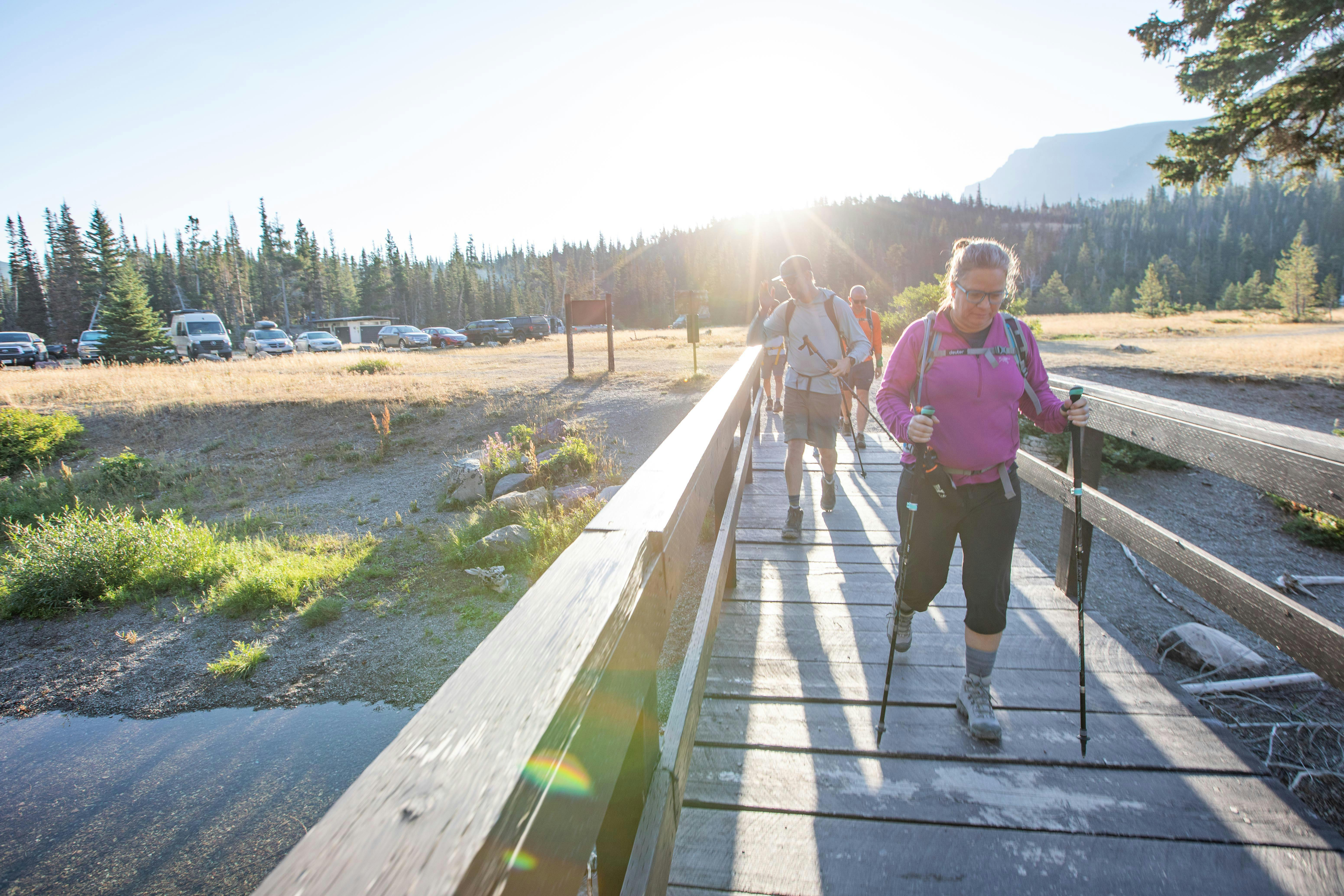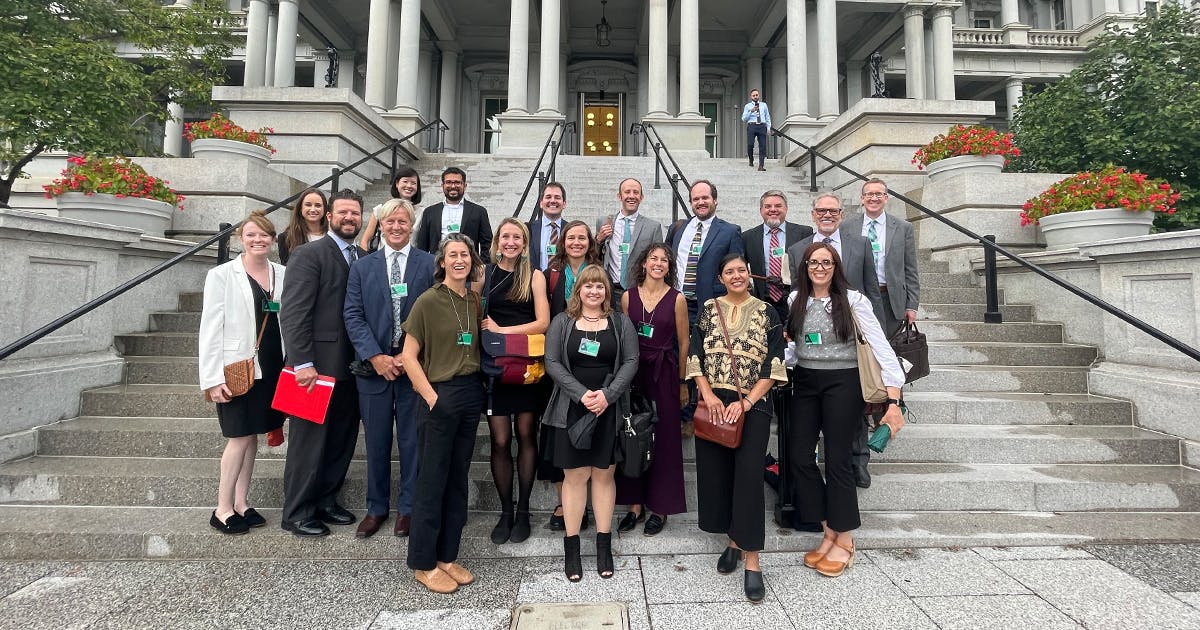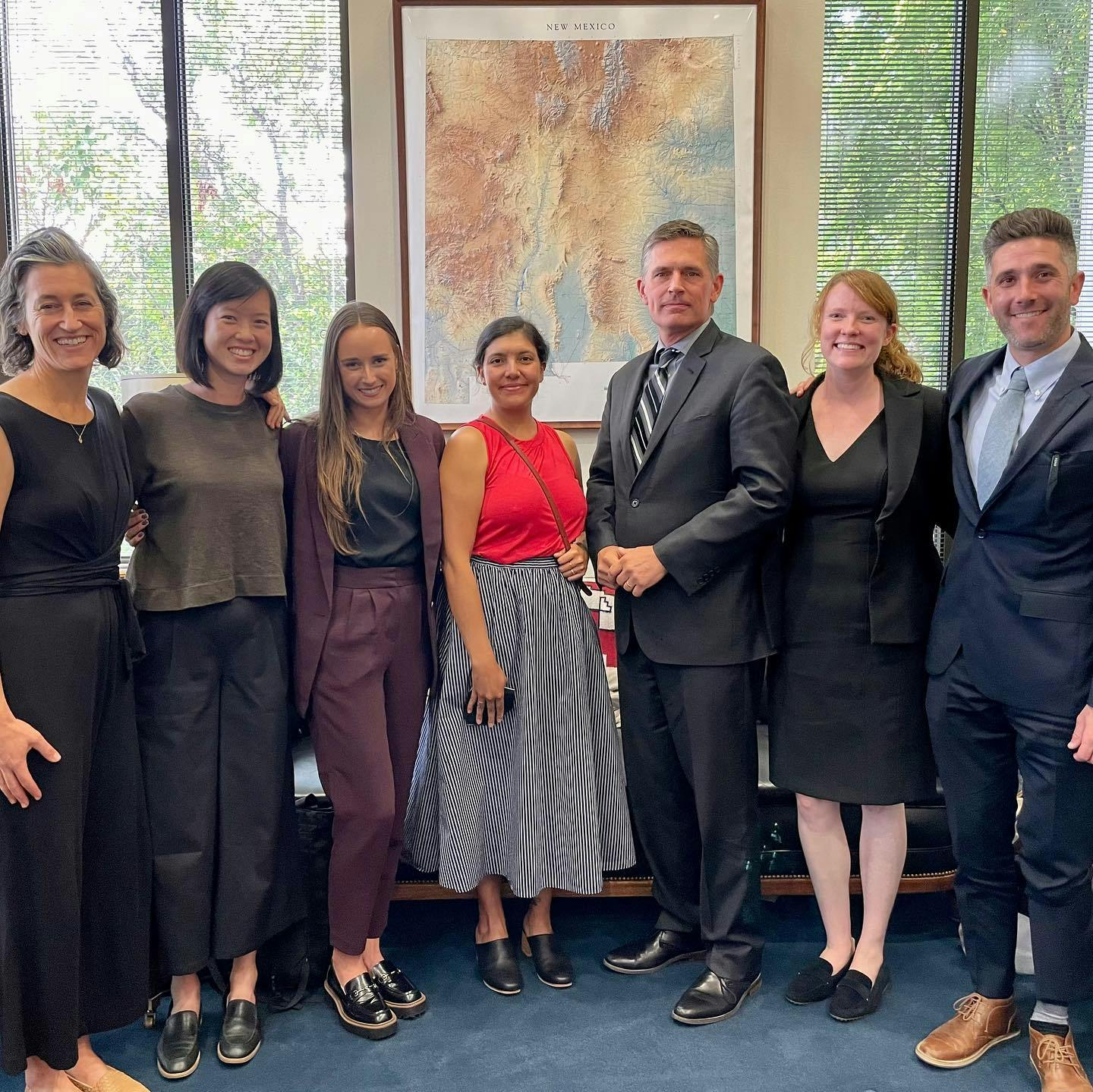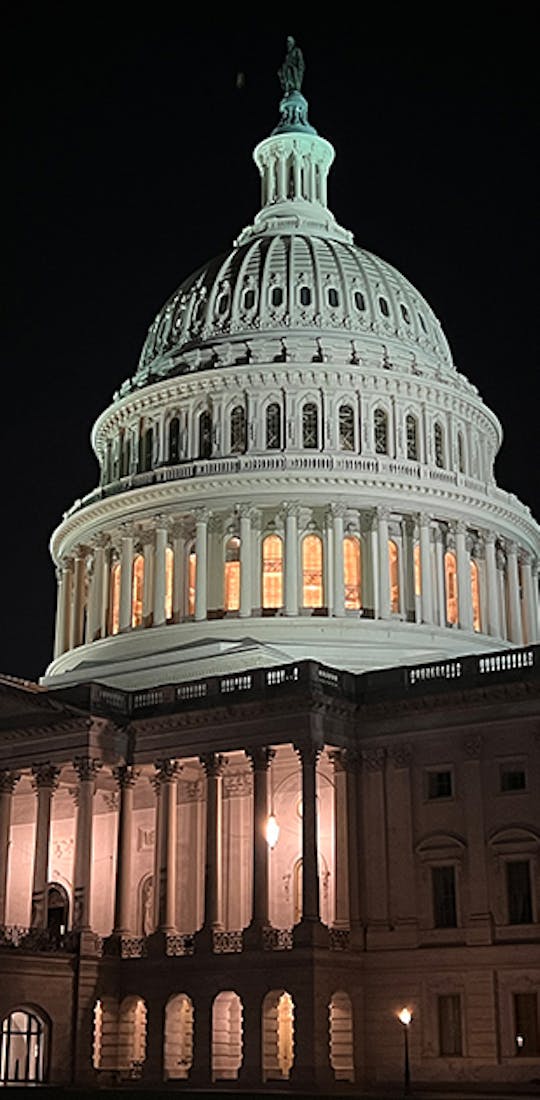While preparing to attend the 2022 Conservation Alliance Fly-in,
I read an excerpt from Save The Boundary Waters that said, “Speaking Loudly for Quiet Places.” This was an ‘ah-ha’ moment for me and my upcoming involvement with The Conservation Alliance, representing Oboz Footwear. These places need our support, our words, our praises, and our advocacy. As much as they would like to, they can’t protect themselves.
Being a member of the Conservation Alliance is of great value to our business, values, and mission. Oboz Footwear is in the business of producing incredible outdoor footwear that empowers people to explore public lands, National Parks, and the healing energy of nature. Without permanent protection of these wild places, our mission and our business would not exist.

The Conservation Alliance
To begin, allow me to provide some brief context about The Conservation Alliance (TCA):
With a mission of harnessing the collective power of business and outdoor communities to fund and advocate for the protection of North America’s wild places, The Conservation Alliance brings together voices across various industries to advocate with a unified vision for a planet where wild places, wildlife, and people thrive together.
Ultimately, The Conservation Alliance binds together 270+ member businesses to protect wild places. (Specifically, protection of 73 million acres of wildlands, 3,580 miles of rivers, removal of 37 dams, and 21 climbing areas).
Each year, the Conservation Alliance announces a handful of Advocacy Priority Campaigns. These identified land and water conservation projects are urgent, vital, and need national attention. The goal is to secure permanent protection.
Here’s how we do it:
- Partner with the organizations and advocacy groups lead the efforts to protect and conserve the selected natural areas.
- Provide grant funding to support projects on-the-ground and in the legislation.
- Get boots on the ground. Join the organizations in meetings with elected officials and congress to ‘speak loudly for quiet places’ and connect business advocates with protection advocacy.
And so, it goes – on September 20, 2022, 11 member companies joined together in Washington DC, alongside Priority Campaign organization representatives to ensure that these specific places received front-and-center attention at the White House and in Congress. From Senators to the USDA to the Department of Interior, the team took part in 22 meetings, discussing 23 bills in congress, over the course of three days.

The bottom line: protecting land and water brings people together. Protection of shared outdoor spaces and public lands will always require bipartisan support.
Let’s dig deeper into this year’s Priority Campaigns:
The Boundary Waters, Minnesota
Partner organization: Save The Boundary Waters
Competing demands for natural resources
Primary goal of the campaign:
- Finalizing a proposed federal 20-year ban on copper mining in this watershed
- Passing permanent protection bills in Congress and the Minnesota legislature
The Boundary Waters Canoe Area Wilderness in northeastern Minnesota is the most visited wilderness area in the United States. The area is protected under the Wilderness Act, created in September 1964. The current threat is proposals for sulfide-ore copper mining on neighboring land, which would cause irreversible harm to water quality, wildlife, public health, and the sustainable outdoor recreation-based economy.
To describe the magnitude, the Boundary Water is part of a 4.3-million-acre system of parks and wild public lands that stretches across the Canadian border. Each year, over 250,000 visitors find themselves exploring the Boundary Waters: camping, fishing, paddling, dogsledding, hunting, and hiking. The Wilderness supports 4,500 direct jobs and a $16 billion economy.
On January 26, 2022, the Biden administration announced it had canceled the two mining leases for a proposed sulfide-ore copper mine right next to the Boundary Waters. While this move addressed the immediate mining threat, permanent protection is still not finalized.
Source: https://www.conservationalliance.com/boundary-waters-2022-priority/
Castner Range, Texas
Protecting habitat in places that are also valued for human recreation
Partner Organization: Nuestra Tierra Conservation Project
Primary goal of the campaign:
- Designating a National Monument to protect the Castner Range by passing legislation in Congress or through administrative action via the Antiquities Act.
Castner Range is a mountainous 7,000 acres located between city neighborhoods and Franklin Mountains State Park, in El Paso, Texas.
With an abundance of Mexican Yellow Poppies, Castner Range has both cultural, ecological, and historical value. The land is currently managed by the Department of Defense. Although not actively used by the military since 1971, Castner Range remains undeveloped despite decades of population growth and land urbanization around El Paso. Additionally, the community just outside Castner Ranger is one of the most disadvantaged urban areas in the country in terms of per-capita household income. Protecting Castner Range will bring greater balance between the developed areas and natural landscape in one of the nation’s lowest per-capita household income urban areas.
In April, 2021, Representative Veronica Escobar introduced the Castner Range National Monument Act, which would ensure greater public access to public lands in El Paso and conserve its natural features, Indigenous and historical significance, and wildlife habitats from development. And in March, 2022, Secretary of the Interior Deb Haaland visited El Paso to hear from the community about the importance of protecting Castner Range.
Source: https://www.conservationalliance.com/castner-range-2022-priority-campaign/
Bristol Bay, Alaska
Competing demands for natural resources, recognizing the rights of indigenous communities
Partner Organization: United Tribes of Bristol Bay
Primary goal of the campaign:
- EPA finalizing its action under the Clean Water Act and veto the Pebble Mine
- Passing bills in Congress and the Alaska legislature to permanently ensure that mining projects that would harm Bristol Bay salmon, rivers and lakes can never be built.
Bristol Bay, located in Southwestern Alaska, is home to one of the world’s last great wild salmon ecosystems.
Salmon play a central role in the cultural and spiritual identity of the Yup’ik, Dena’ina, and Alutiiq peoples who have lived in the region for millennia and are critical to their way of life. Home to the world’s largest wild sockeye salmon run, Bristol Bay provides over 15,000 jobs and generates $2.2 billion annually from commercial fishery. The region is also home to 24 other species of fish, 200 kinds of birds, an incredible brown bear population, and dozens of other mammals. Each year tens of thousands of anglers and visitors from around the world are drawn to its extraordinary beauty and abundance. However, the proposed Pebble Mine would produce billions of tons of contaminated waste, which could destroy the region’s salmon habitat and permanently impact the many communities and industries that depend on it.
In November, 2020, the Army Corps denied a federal permit for the Pebble Mine. In October, 2021 the courts cleared the way for the Environmental Protection Agency to again consider taking action using section 404(c) of the Clean Water Act to veto the Pebble Mine.
Source: https://www.conservationalliance.com/bristol-bay-alaska-priority-campaign-2022/
Adapting to changing climate and protecting habitat in places that are also valued for human recreation
Partner Organization: Dolores River Boating Advocates
Primary goal of the campaign:
- A bill to designate a 75,000-acre National Conservation Area spanning from the base of McPhee Reservoir to the San Miguel/Montrose County line, which includes more than 70 miles of the Dolores River, establishes the Ponderosa Gorge Roadless Area, and protects special river values.
The Dolores River begins high in the San Juan Mountains of southwestern Colorado and flows 230 miles until it joins the Colorado River in Utah’s red rock desert near Moab. Humans have lived in the Dolores River region for more than 10,000 years, as evidenced by incredible cultural sites in some of the steep, sandstone canyons. Water is sacred to many Indigenous peoples, including the Ute Mountain Ute tribe, whose members depend on water from the Dolores River for farming and milling enterprises. McPhee Dam and Reservoir were built in the 1980’s to support the growing agricultural communities in the region, and to provide much-needed water for the Ute Mountain Ute Tribe in Towaoc. However, a changing climate and prolonged drought means that for decades the reservoir has not had enough water to meet the needs of agriculture, community drinking water, recreation and habitat for native wildlife.
A National Conservation Area is a protection tool that has been discussed for many years for the Dolores River below McPhee Reservoir, and last fall Senator Bennet released draft legislation for a portion of the river corridor. If passed, the legislation would create a new requirement for the Bureau of Reclamation to work with stakeholders on management of flows below the reservoir to benefit native fish and recreation within the sideboards of existing water law and allocation.
Source: https://www.conservationalliance.com/dolores-river-2022-priority-campaign/

Article References: Kouzoukian, Allie. “2022 Priority Campaigns.” The Conservation Alliance, 9 May 2022, https://www.conservationalliance.com/.

